The fight of aviation of the Northern Fleet with enemy sea communications
The conquest of the territory of the Soviet Arctic occupied one of the important places in the fascist plan of war with our country. The strategic goal of the German offensive in the North was the seizure of the Kirov railway, the city of Murmansk with its non-freezing port, the Polyarny naval base, the Peninsula of Sredniy and Rybachy, the entire Kola Peninsula. To implement its plans, the fascist command proposed to make extensive use of sea transportation. They acquired crucial importance for the enemy, since there were no railways in the north of Norway and Finland, and there were few highways. The role of maritime communications has increased so much that without them, the enemy could not conduct combat operations either with his land forces or naval forces. In addition, the military industry of Germany was very dependent on the stability of maritime communications: 70-75% nickel was supplied from the northern regions of Scandinavia.
For maritime transport, the Germans used most of their own and almost all of the Norwegian (merchant and fishing) fleet, and to ensure the sustainability of communications attracted significant forces of escort ships and fighter aircraft.
The violation of enemy naval communications from the very beginning of the war has become one of the main tasks of our Northern fleet (SF), in the decision of which he took an active part aviation. Combat use of aircraft was complicated due to physical and geographical conditions. Polar nights and days negatively affected the performance of the flight crew. The presence of a large number of deep-sea fjords, bays, as well as islands and a high rocky coast, created favorable conditions for the enemy to form convoys and navigate them by sea, while at the same time making it difficult to use mines and low torpedo bombers against them (during the war, naval aviation had the so-called low and high-altitude torpedo bombers : low torpedo bombers carried out an attack on ships at altitudes of 20-50 m, torpedoing from a height of 25-30 m; high-altitude torpedoes drove torpedoes from altitudes of at least 1000 m), and also limiting the choice of direction s to attack aircraft of all types. In addition, frequent snow and rain charges of considerable duration, strong winds and blizzards complicated and sometimes frustrated combat sorties.
The capabilities of the Northern Fleet aviation for action on enemy naval communications at the beginning of the war were very limited. In its composition there was no torpedo and assault aircraft, and a small number of bombers and fighters were used to assist ground forces. Therefore, for violation of enemy communications, naval aviation was occasionally involved. At the same time, strikes were mainly carried out on transports and convoys going to the ports of Varanger Fjord, from where the ground and sea enemy groupings were fed. And only from October 1941, after stabilization of the front line and the beginning of the polar night, it became possible to use airplanes of the type SAT and partly reconnaissance aircraft for actions on enemy ports and bases, in which the main targets of strikes were transports and ships, and spare structures.
Air strikes were carried out on the ports and bases of the Varanger fjord: Liinakhamari, Kirkenes, Varde, Vadsø, which were more than 200 km from our airfields. As a rule, bombers flew to the objects of attack without cover, carrying out individual targeted bombing from heights from 4000 to 7000 m. Under favorable conditions, sometimes strikes were carried out on ships and at sea crossing. The results, of course, were very modest: having made overflight flights in 1941 over 500, the bomber aircraft sank only 2 vehicles and damaged several ships.
In the spring of 1942, the operational situation in the North changed dramatically: the main struggle was shifted from the land to the sea, and was conducted mainly on sea lanes. The SF at this time is reinforced by the 94 Aviation Regiment from the Soviet Army Air Force, and in the summer, by decision of the Supreme Command Headquarters, he was also given a special naval air group consisting of three bomber regiments armed with Pe-2 and DB-3F bombers . In September, the fleet was replenished with two more aviation regiments (Pe-3 aircraft). In addition, at this time the 24 th mine and torpedo regiment is being formed, the 36 th long-range air division as part of the 60 of the DB-3F enters the fleet's operational control.
The measures taken to strengthen the Northern Fleet's air force grouping made it possible to move from rare raids by small groups to enemy ports and bases, to intensive operations by larger aviation groups. However, all this required the command of a more perfect organization of military operations and coordination of the efforts of heterogeneous aviation forces. It was especially necessary to increase the role of mine-torpedo aviation, which has the most effective weapons combat on sea communications - aircraft torpedoes. In May, 1942, the fleet aviation received the first batch of torpedoes for low torpedoing. Since that time, there has been a turning point in its use on enemy communication routes. Torpedo bombers become the main aircraft in the fight against enemy transports. The zone of aviation operations expanded to Altenfjord.
By the beginning of the war, SF aircraft had 116 aircraft, including 49 naval (boat) reconnaissance aircraft MBR-2, 11 SB bombers, 49 fighters, 7 transport (boat) GTS aircraft. The “free hunt” method was widely adopted at that time, since the enemy conducted transports with relatively little guard. After detecting the transports, the torpedoes were dropped at a distance of 400 m and more from the target. The first successful attack by pilots who carried out low torpedoing in the North was made on 29 on June 1942 of the year. The convoy that left the Varanger Fjord included 2 transport and 8 escort ships. For his attack were sent 2 torpedo bomber, under the command of captain I. Ya. Garbuz. Near the Porsangerfjord Bay, at about 18 hours, torpedo bombers were discovered by an enemy caravan that traveled 25 miles from the coast. Going from the sun, the aircraft began to approach the enemy, building an attack on the largest transport that went in the head. From the 400 distance m, the crews dropped torpedoes and, firing onboard machine guns on escort ships, got out of attack. The result of the attack was the sinking of transport with a displacement of 15 thousand tons. By the end of the year, low torpedo bombers carried out another 5 successful attack, sinking the 4 vessel and the patrol ship.
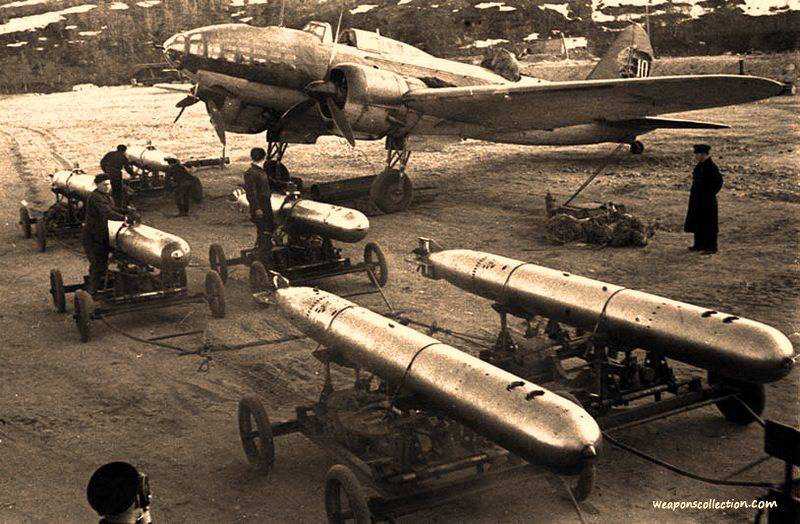
"Free hunting" was conducted mostly in pairs, and sometimes by three aircraft. Group searches and attacks soon became major in the actions of torpedo bombers: in 1942, of the 20 attacks, only 6 conducted single planes. An important condition for the success of group searches and strikes was to provide them with reliable intelligence data. As the combat experience of the crews increased, torpedo attacks began to be practiced in the dark. It was already a big step forward for the young torpedo aircraft of the Northern Fleet. The pioneer of successful night attacks on enemy communications was Captain GD Popovich He won his first night victory on 15 August 1942 of the year, the second 15 December of the same year, sinking in each of the transport attacks. He is honored to introduce night torpedo strikes into the daily practice of torpedo-bearing aircraft.
Simultaneously with the strikes by torpedoes, aviation began to use mines, which were installed by single vehicles in ports or straits inaccessible to other fleet forces. In total, in the 1942 year, the crews of the SF aircraft carried out more than 1200 sorties for operations on communications, about half of them for reconnaissance, and others for attacking ports and convoys, as well as setting minefields. The result of these actions was the destruction of 12 enemy ships.
In the 1943, the fleet continued to receive new aircraft, which not only made up for their loss, but also made it possible to form new aircraft units. Thus, as part of the SF air force, it began combat operations against enemy ships of the 46 th assault aviation regiment. He was armed with IL-2 attack aircraft.
A significant event for the entire fleet at that time was the first victory of the 46-th cap, won by 7 on June 1943 of the year when it hit the convoy, which was discovered by aerial reconnaissance in Cobbhol Fjord. The attackers flew up to the convoy from Finland. The appearance of unknown aircraft caused confusion among the enemy. Vessels strenuously gave identification signals and opened fire only when IL-2 began to dive at them. Soviet pilots dropped bombs on 33 convoy and fired 9 rockets. The head vehicle with a displacement 5000 t, in which bombs dropped by lieutenant S.A. Gulyaev, caught fire and sank. The second vessel damaged the aircraft piloted by captain A.E. Mazurenko.
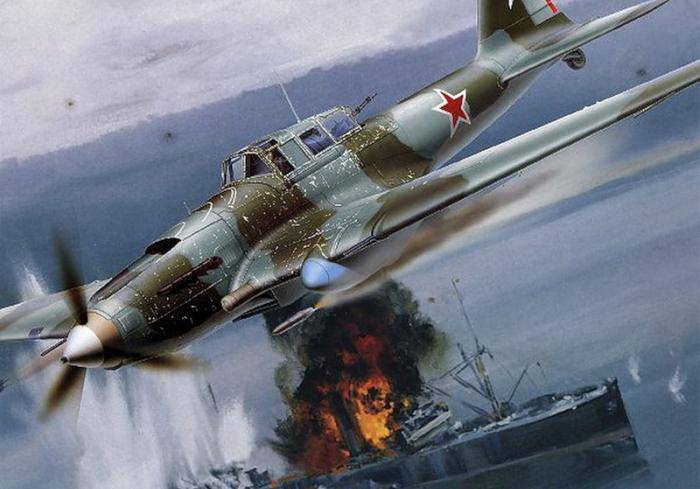
In addition to attack aircraft, strikes against convoys were inflicted by groups of 29 aircraft of the pick-up air regiment, covered by small groups of fighters. The area of their actions, in most cases, was the Varanger fjord. So, 16 June 1943, a six of the six Pe-2 (lead major S.V. Lapshenkov), was tasked with delivering a bomb strike on a convoy, discovered by intelligence at Cape Omgang. On the route, the group, dodging to the left, went to Vardo and found herself there. In order to mislead the enemy, Lapshenkov turned the group on the opposite course, and then, being far away in the sea, again led it to the goal. The convoy was found at Cape Makkaur. Disguised by clouds, the leader led the aircraft to the targets and gave the signal: “To attack from a dive”. The links were rebuilt with the bearing with the interval between them 350 m, and between the aircraft in the link 150 m and began the attack. Crews from the 2100-2000 heights entered the vehicles at an angle 60-65 ° into a dive and from the heights 1200-1300 m dropped 12 bombs FAB-250. 8 fighters covered the "looped" at the entrance and exit of the dive. Both groups returned without loss. In this battle, a group of Lapshenkova sank transport.
Increased losses in transport ships and escort ships forced the fascist command to resort to some measures to enhance the protection of convoys. Since the summer of 1943, the composition of convoys usually included 3-4 transport with cargo and troops and to 30 escort ships, including 1-2 destroyers, 4-5 minesweepers, 8-10 patrol ships and 6-7 patrol boats. At the same time, the enemy began to widely apply new methods of securing convoys at the crossing, creating very difficult conditions for our pilots to reach the target and attack the transports. Movement directly at the coastline and covering one of the flanks of the convoy with high rocky shores, making it difficult to attack low torpedo bombers and mastheads, allowed the enemy to push escort ships out to the open sea 10-15 km from defended transports. And before dropping a torpedo or a bomb on a target, the planes had to overcome this zone, saturated with anti-aircraft fire from ships and the coast.
As an example of the composition of the convoy and the density of its anti-aircraft fire can be called a convoy, which found reconnaissance aircraft 12 October 1943, at Cape Northin. He followed east, snuggling up to the shore, consisted of 3 transports and had a strong guard. The 6 minesweepers were ahead in the course, the 3 sentry ship was on the right along the coast. Three escort lines were created seaward from the transports: the first was the 2 destroyer squadron, the second the 6 patrol ships and the third the 6 patrol boats. Above the convoy were fended two fighter aircraft. The firepower of this convoy was determined by the number of guns and anti-aircraft machine guns available on all ships.
If we consider that the attacking planes are in the 3 antiaircraft fire zone for minutes and, moreover, 2 minutes are fired upon after leaving the attack, then the total duration of their stay under fire is 5 minutes. During the same time, subject to firing only 50% anti-aircraft artillery and convoy machine guns, 1538 shells and 160 thousand bullets can be fired.
The enemy’s fighter jets also presented a great danger to the attacking aircraft, which usually acted as follows:
- when a convoy approached our aviation zone, 2-4 fighters of the Me-110 type fired on it, and all the air defense systems of the convoy and the coast were also on high alert;
- with the detection by posts of visual observation or radio engineering means of reconnaissance aircraft in the air, the number of patrol fighters increased; however, their bulk remained still in readiness at the aerodromes;
- above the convoy was installed the barrage, as a rule, on two, and sometimes on three heights (4000, 2000, 300 m);
- Groups of 6-8 aircraft were sent to intercept our aircraft, and often enemy fighters entered our territory;
- by the time of the strike on the convoy, the fascists sought to concentrate fighter aircraft over it from the nearest airfields. If this was possible, then cruel battles were fought over the convoy, and attack aviation had to carry out attacks with a strong destructive counteraction.
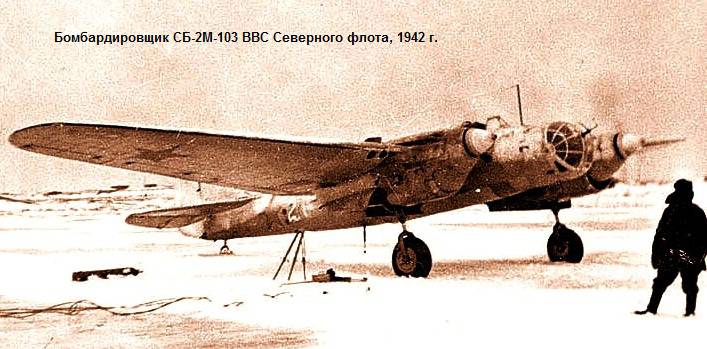
All this created considerable difficulties for the shock groups of heterogeneous aviation forces. But she did not stop the attacks of the convoys. On the contrary, the activity of the North Sea aviation intensified. In her actions one could see a matured tactical and firing skill. Increasingly, massed attacks, combined strikes of all types of aircraft, began to be used. And in the last period of the war fleet aviation, torpedo boats, and submarines successfully interacted. The following figures indicate the intensification of our aviation operations on enemy communications: if in the 4 quarter of the 1942, the entire 31 aircraft was flown for strikes against convoys, then in the 1 quarter of the 1943 of the year, 170 aircraft flew out of the German communications, of which 164 torpedo bombers .
A typical example of the organization and conduct of a combined strike is a strike on the 13 convoy of October 1943 of the year, near Cape Kibergnes (south of Vardø). The strike involved 4 tactical groups: the six Il-2 attack planes, the 3 high-altitude and 3 low torpedo bombers, and the six Dive X-NUMX dive bombers. All groups had a fighter cover consisting of 2 aircraft. The reconnaissance aircraft established continuous surveillance of the German convoy and directed strike aviation groups. The preliminary attacks of Pe-30 and Il-2 weakened the defense of the convoy and violated its combat order, which facilitated the entry of low torpedo bombers. With the 2-1000, they dropped the 1500 torpedoes (the most trained crews took the torpedoes for 4). German fighters had a strong opposition, and this somewhat reduced the results of the strike; nevertheless, the transport ship and the patrol ship were sunk, and 2 vehicles were damaged. In addition, 2 Nazi planes were shot down in aerial combat.
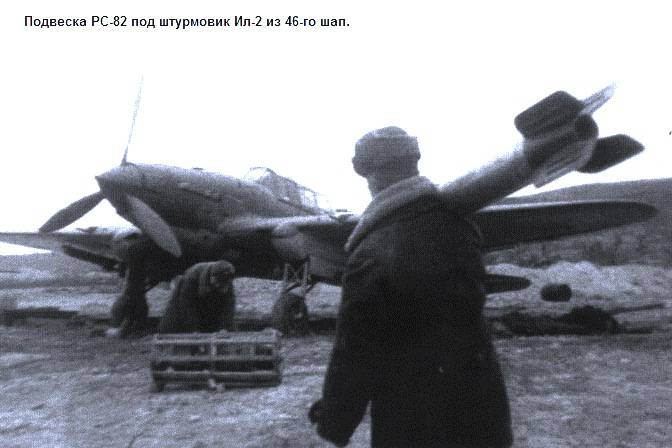
The aircraft of the Northern Fleet independently, as well as in cooperation with the Air Force of the Karelian Front and parts of the ADD, delivered strong blows at enemy airfields. Tense struggle in the air in the summer of 1943, ended with the victory of Soviet aviation. The forces of 5 of the German Air Force continued to weaken. At the beginning of the 1944 of the year, in the northern airfields of Finland and Norway, the compounds of this fleet numbered 206 aircraft, and in some months their number decreased to 120.
The naval enemy grouping in the bases of Northern Norway was significant. At the beginning of 1944, it included: battleship, 14 destroyers, 18 submarines, 2 minelayer, more than fifty patrol ships and minesweepers, a flotilla of torpedo boats, more than 20 self-propelled barges, of the order of fifty boats, various auxiliary vessels. The surface ships, with the air defense equipment available on them, and German aviation were mainly involved in the protection of navigation on communications, therefore 1944 was not an easy year for the SF aviation. Scheduling the tasks and distributing the shock and support forces to the objects depending on their location, the fleet commanders approached their implementation differentially. If, for example, the torpedo bombers went off into long-range raids on enemy communications, then, given the limited range of attack aircraft, the 46 cap mainly conducted combat work on nearby communications.
Using the rich experience of our other fleets, the North Sea men mastered top mast bombing. This method was named because of the low heights of dropping bombs - from 20-30 m, that is, at the level of the top (top) of the mast. This tactical technique gave a large percentage of hits on the target. The first among the Northern Seamen to use this method of bombing were the pilots of the 46 th assault and 78 th fighter regiments, and then the 27 th fighter regiment. Most actively used the new method 46-th cap. For 1944 year attack aircraft sank 23 ship and transport vessel of the enemy. Aviation further intensified its work on enemy communications. By 1944, it had grown significantly and had 94 attack aircraft, 68 torpedo bombers and 34 bomber. The skill of the flight personnel, the high training of the aviation commanders made it possible to closely approach the solution of the most difficult problem of combating shipping - the organization of tactical interaction of heterogeneous forces, i.e., their simultaneous strikes against convoys. First of all, this was achieved in blockade operations against the port of Petsamo. In particular, on May 28, as a result of joint attacks on enemy convoys of Soviet torpedo boats, airplanes and the coastal, three vehicles and a tanker were sunk, and a minesweeper, two patrol boats and three other vessels were damaged. After this battle, the enemy no longer made any attempt to carry out ships to the port of Liipa-hamari or withdraw them from there.
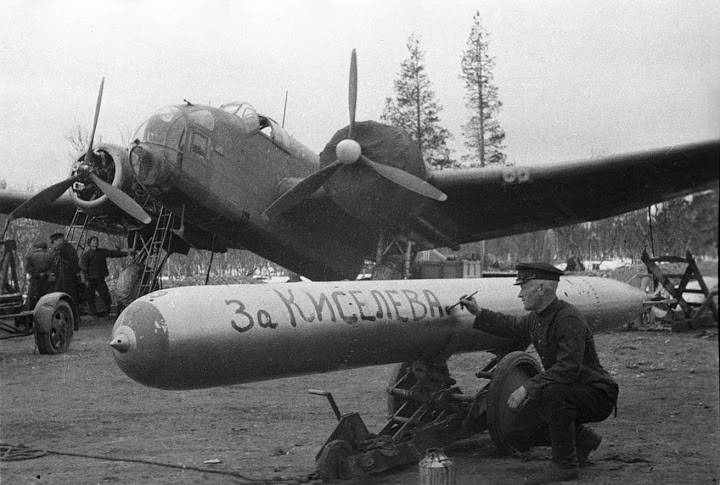
From 17 June to 4 in July, the port of Kirkenes, the main unloading point for fascist military cargo and the port of sending ore to Germany, was dealt three powerful blows (from 100 to 130 aircraft each). Permanent actions of Soviet aviation on Kirkenes and the blockade of the port of Petsamo, carried out by artillery and torpedo boats, forced the Nazis to carry out part of the cargo operations in the Tanara and Porsanger fjords remote from the front.
Our aircraft delivered strong blows against enemy convoys at sea. So, in May-June, six strikes were carried out, in which 779 aircraft were involved. The 5 th mine and torpedo division, the 14 th mixed aircraft division, the 6 th iad and the 46 th cap, in close cooperation, sometimes achieved a complete rout of the convoys.
An example of the interaction of diverse fleet forces are actions of aviation and torpedo boats in the fall of 1944. So, on September 24, the C-56 submarine found a convoy, attacked him and sent the transport to the bottom. After this, the commander reported that the convoy was heading in the direction of Varanger Fjord. Fleet commander Admiral A. G. Golovko, having received this report, ordered the commander of the Air Force and the commander of the brigade of torpedo boats to deliver a series of consecutive and joint strikes in order to destroy the convoy.
The convoy, which approached Cape Skalnes, was significantly strengthened by joining ships from Vardø, Vadso and Kirkenes. Low clouds and haze made it difficult for our aircraft and boats to monitor the convoy, so its composition could not be accurately determined. The strike of the first group of attack aircraft coincided with the attack of boats: in 10 and 45 mines 12 Il-2, covered with 14-th fighters struck a bombing attack, and at the same time, attacks of 9 torpedo boats began. The beat lasted 6 minutes. A group of fighter cover and battle provided the attack aircraft, and a separate group covered the boats. After 2 minutes after the attack of the last boat, there was a strike by the second group of attack aircraft, consisting of 8 Il-2 and 10 Yak-9, which was covered from 2 air. The actions of the bombers and attack aircraft made it easier for the boats to get out of the battle and detach from the enemy. However, the enemy sent a detachment of patrol boats from Beckfjord in order to intercept Soviet boats on the way to their withdrawal to the base. Our command sent a special group of attack aircraft to the area, which frustrated the enemy’s attempt. In addition, aviation carried out several strikes on coastal batteries in the areas of Komagnes, Skalnes, Sture-Ekkerey with the aim of suppressing their fire. Thus, the tactical interaction of torpedo boats was achieved not only with fighter cover, as it was before, but also with attack aviation groups. The Fascists lost the 2 minesweeper, the XNUMX self-propelled barges and the patrol boat.
After a joint strike, the aircraft made a number of attacks. At Cape Skalnez, the remains of the convoy were attacked by 24 fighter-bombers. An hour after them, attack aircraft again rose into the air to strike at the port of Kirkenes, where the enemy’s ships sheltered. A group of 21 IL-2, covered with 24 fighters, participated in these actions. One vehicle was sunk, one ship and a patrol ship were damaged. At the same time, 16 of other aircraft blocked the Luostari airfield.
In October, all sorts of aviation operated in the Petsamo-Kirkenes operation on enemy convoys, as a result, these actions resulted, in essence, in the pursuit of enemy convoys, which carried out intensive transport of personnel and equipment. Only in one month, the 63 convoy, which included 66 transports and 80 self-propelled barges, was marked off the coast of northern Norway. Thanks to the actions of the SF aviation in the Petsamo-Kirkenes operation, the enemy lost up to 20 transports. During the air battles during this time, enemy aircraft were shot down over the 56 sea. In total, during the war, fleet aviation destroyed 74 vehicles, 26 ships and auxiliary vessels.
Sources:
Zolotarev V., Kozlov I. Fighting aviation of the Northern Fleet. / / Three centuries of the Russian fleet. T.4. SPb .: Polygon, 2005. C.307-318.
Achkasov V., Pavlovich H. Actions on sea communications // Soviet naval art in the Great Patriotic War. M .: Voenizdat, 1973. C. 238-246.
Kozlov I., Shlomin V. Red Banner Northern Fleet. M .: Voenizdat, 1983. C.154-212.
Kuznetsov G. Fighting aviation of the Northern Fleet on enemy sea communications // VIZH. 1973. No.6. C.39-46.
Lavrentyev N., Demidov R., Kucherenko L., Khramov Yu. Naval Aviation in the Great Patriotic War. M .: Voenizdat, 1983. C. 34-43, 102-119.
Morozov M. Marine torpedo-bearing aircraft T.2. SPb .: Gallery-print, 2007. C.126-284.
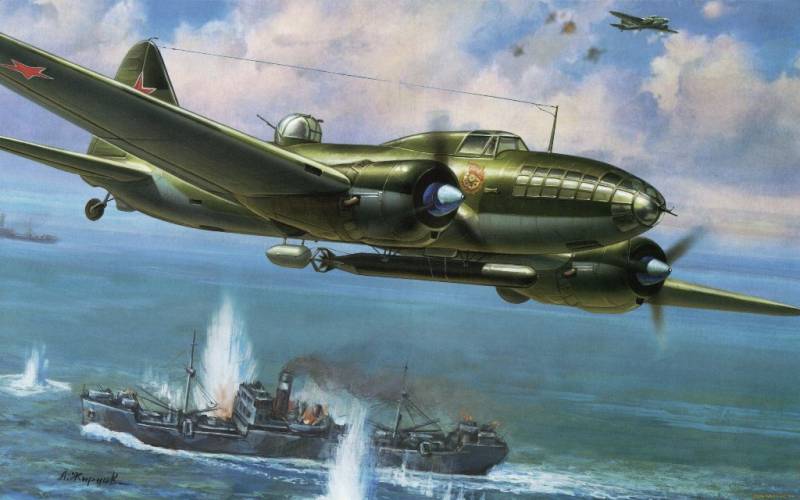
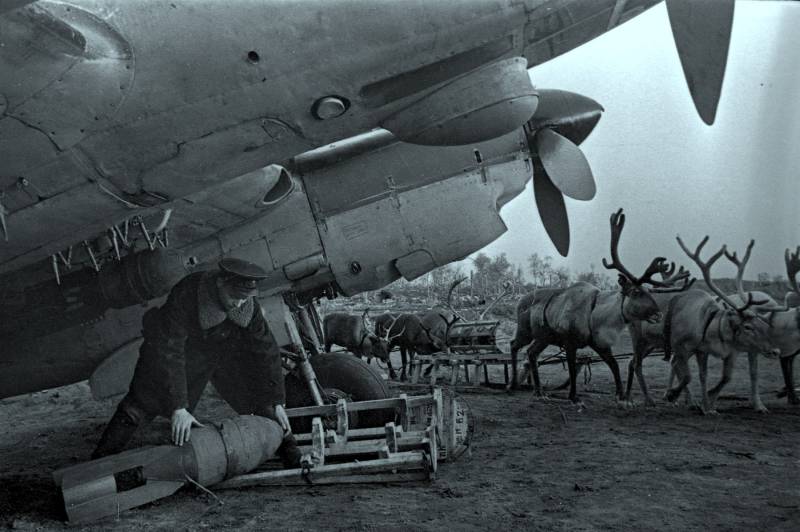
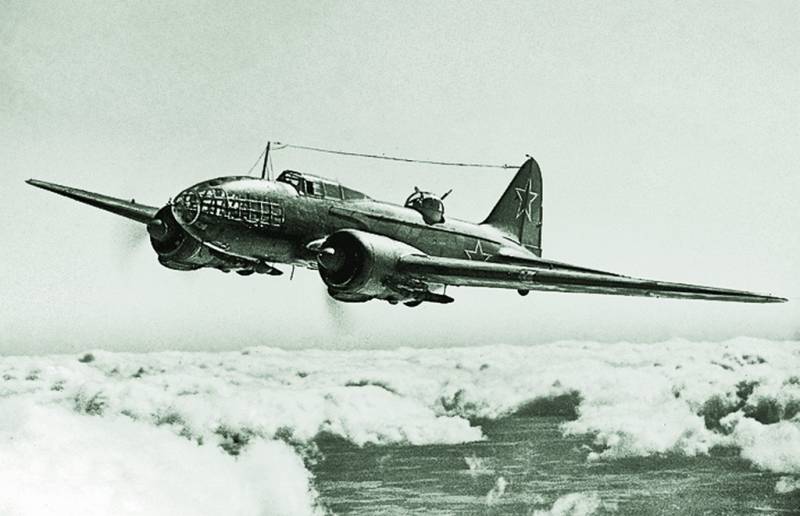
Information